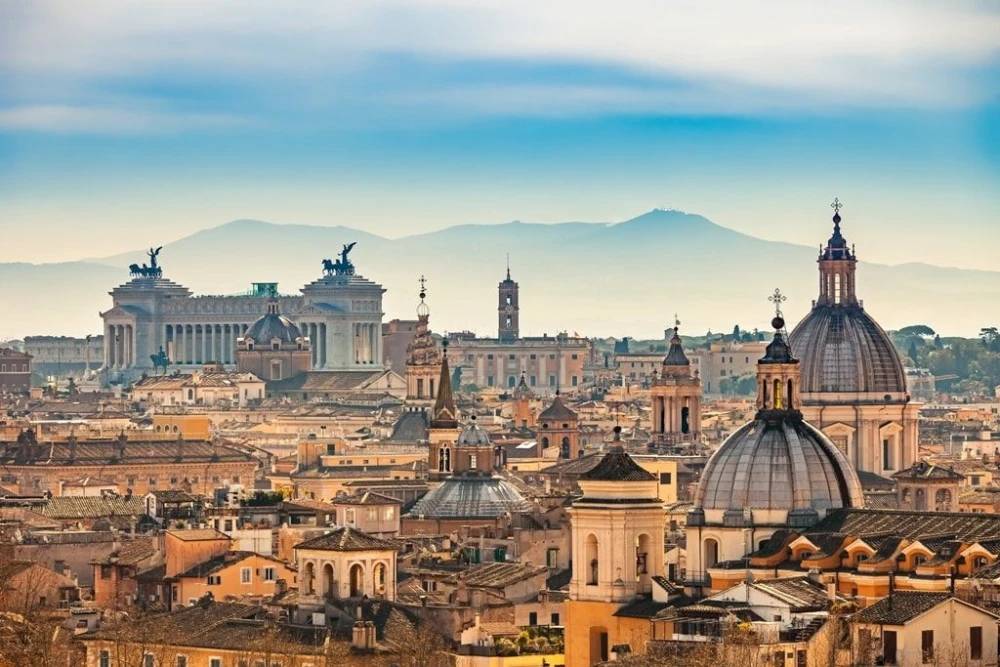15124, Maroysi, Athens, Greece
Civitavecchia (Rome), La Spezia, Amalfi, Reggio Calabria, Kotor, Dubrovnik, Split, Zadar, Ravenna


Our gateway to the Eternal City, Civitavecchia has served as Rome's seaport since the 13th century, boasting a long and venerable history. Its location near the modern city, made it a perfect vacation resort for emperor Trajan, who built a pleasure villa. while Bernini and Michelangelo designed the harbor fortifications. Yet the Eternal City, the ancient capital of the Western World and the center of Christianity for nearly 2.000 years, is our main reason to be here. YYou can visit the ruins of the Forum and the Colosseum, throw a coin in Fontana di Trevi to make sure you return to Rome one day, take a photo in front of the Vatican, view the splendors of the Sistine Chapel or climb the Spanish Steps, once the heart of Rome's Bohemian Quarter and enjoy a delicious gelato, in the glamorous area.

La Spezia is a city of Liguria in northern Italy. Located at the top of the Gulf of La Spezia, it is an important commercial port and base of the Italian Navy. It is also the getway to Florence and Piza

La Spezia is a city of Liguria in northern Italy. Located at the top of the Gulf of La Spezia, it is an important commercial port and base of the Italian Navy. It is also the getway to Florence and Piza
The Amalfi Coast is considered one of the most picturesque parts of the Italian coastline. Villages perched on hillsides, steep streets and a great view of the turquoise waters of the ocean. The Amalfi Coast is known for producing the famous limoncello. Lemon orchards are found everywhere along the coast and the smell of lemon pervades the air. It has been declared by UNESCO as a World Heritage Site

Kotor, which was first settled during the days of ancient Rome, is located along one of Montenegro's most beautiful fjord-like bays. It is a precious gem, with a well preserved urban center, which hosts ample medieval architecture and numerous monuments of cultural heritage that have designated the town, a UNESCO “World Natural and Historical Heritage Site". Walking along the streets and alleys, you will enjoy a fairy-tale setting, where medieval spires rise dreamily over orange rooftops beside mountainous scenery.

Dubrovnik, the so rightfully called "Adriatic jewel", is walled all around with ramparts that drop to the sea and enclose a town of closely clustered buildings, mostly attired in white walls and brilliant red rooftops. A walk along its cobblestone streets, where time seems to stand still, will reveal an idyllic small town, with many highlights, such as Roland's Column, the Bell Tower or the Old Port, the Franciscan Monastery/ Old Pharmacy Museum, Rector’s Palace (the most historic monument in Dubrovnik), Sponza Palace and the Dominican Monastery, between the Sponza Palace and the Ploče Gate. Time allowing, take the cable car and enjoy the best views of Dubrovnik and the surrounding area are, from the top of the Srd Hill.

Split, built under the orders of the Roman emperor Diocletian, who lived out his last days after abdicating in AD 305, is located between Venice and the Ionian Islands, on the Dalmatian coast and is one of the most important ports of Croatia. Today, the remarkable residence of the Roman Emperor, listed as a UNESCO World Heritage Site, awaits your discovery. The white limestone palace, part luxurious villa, part military camp, is enclosed by imposing walls and connected by roads linking the eastern Silver Gate with the Iron Gate to the west. Within its premices, you can see an octagonal domed mausoleum, temples and a monumental court accessing the imperial apartments.

Zadar is the harbor of Croatia on the Adriatic coast and the historic center of Dalmatia. It was an old Roman town and nowadays there are buildings with unique architecture, many of which are classified as World Heritage sites by UNESCO.
Ravenna, the former capital of the Western Roman Empire (402- 476) in Emilia Romana region, is famed for its mosaics which depict a rich cultural heritage. Eight early Christian monuments of Ravenna are inscribed on the World Heritage List, among which, the Basilica of Sant'Apollinare in Classe (549), the Mausoleum of Galla Placidia (c. 430), the Basilica of Sant'Apollinare Nuovo (c. 500) and the Mausoleum of Theoderic (520), the Archiepiscopal Chapel (c. 500) and the Baptistry of Neon (c. 430). Ravenna is a port town and cruise destination which serves as a gateway to the Apenine republic of San Marino, the oldest surviving sovereign state in the world and one of the smallest states in the world.
Itinerary







